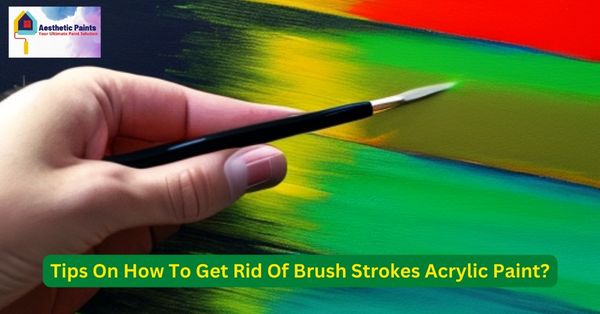Home improvement modern ideas are slowly gaining fame in the market today. How best you can action that out with a tight budget? Well, a great way to start you off is making use of acrylic paint, especially for high-traffic areas like the living room and the kitchen.
Remodelling your home come with benefits that you should be aware of. In addition, living in a safe and comfortable space is a goal that many, you included, desire to achieve. It is one of the best ways to take care of your family without a doubt- they need to feel safe and comfortable and live a fantastic healthy lifestyle.
If you are wondering how best you can achieve that specific goal, there is no need to worry yourself more- a tight budget can work. The use of Acrylic paint on the exterior and interior surfaces is one of the greatest ways to start your home improvement journey swiftly. But first, Did you know how to get rid of brush strokes? Acrylic paint is an essential technique in matters of home acrylic painting. Well, yes, that is true, and here is a uniquely comprehensive guide to help you out.
What Is Acrylic Paint?
Acrylic paint is chemical based well known for its fastest drying property. Consider it the best paint to use as it covers a wide range of home projects that are both external and internal- concrete, masonry, wood, or particle boards.
What are the Main Components of Acrylic Paint?
The main components of acrylic paint are:
1. Pigment- A granular solid that provides the acrylic paint with color.
2. Blinder-Essential in keeping the pigment in place after drying off.
3. Vehicle ( water)- Responsible for carrying the pigment and blinder.
Why Acrylic Paint Is The Best?
Acrylic paint tends to be better than any other paint because its chemical property can expand and contract, thus adapting to any kind of weather or temperature.
Firstly, its ability to dry off quickly gives you ample time to work on your house while living in it.
Secondly, it is a flexible paint for redoing all your home projects.
Thirdly, acrylic paint is durable, and you get credit for ensuring that the paint will serve you long-term.
Fourthly, cleaning will be made easier- acrylic paint can resist water, and does not flake or break easily.
What are the Different Types Of Brush Strokes?
Acrylic painting has a lot to do with brushes. Knowing different types of brush strokes and their specific job will give you an easy time understanding how to get rid of brush strokes and acrylic paint.
With that in mind, have a look at the types of brush strokes that you will be using:
1. Round Brush: Use this brush with your thin acrylic paints to cover large surfaces.
2. Pointed Brush: For a home acrylic painting that needs detailed work.
3. Flat Brush: Are you a lover of creating and in need of different acrylic painting textures? Well, this is the perfect brush for a job well done.
4. Bright Brush: Controls all your strokes with a thicker application.
5. Filbert Brush: A fantastic brush for blending in all your acrylic paint colors.
6. Angular Brush: Great for large acrylic paint areas and small corners.
7. Fan Brush: For all your dry brushing technique and creating textures.
8. Detail Round Brush: Essential for fine-line acrylic paint and details.
What are the Different Types Of Brush Strokes Techniques?
Different types of brush strokes techniques details are as follows:
Brush Drawing
If you are working on a time limit schedule or running out of time, brush drawing your acrylic paint will speed up your time, thus enabling you to be on track with your painting goals and achievements.
Dubbing
If you are new to redecorating your home and trying out one or two things with your acrylic paint, making use of this technique will be a brave move. It helps you to use small amounts of acrylic paint.
Double Loading
Are you working with two acrylic colors? Well, this technique will ensure that you get the right color effects by adding richness and dimensions.
Dry Brushing
Helps in giving you natural acrylic paint textures.
Flat Wash
Use this move to create a foundation for your other acrylic paints.
Glazing
Helps you to achieve the effect of oil paint while using acrylic paint. Sounds confusing, right? But that is the truth, especially when you mix thin acrylic paint with water.
Layering
Helps in tint achievement, texture change, and acrylic color change.
Impasto
For surfaces that need to stand out, out from a flat surface.
Blending
A great way to soften edges between two acrylic paint colors.
Fading
If you feel the need to separate two acrylic paint colors, blending will give you an amazing workflow.
What Causes Brush Strokes?
Getting familiar with some of the mentions of brushstroke techniques will not make you escape brush strokes of acrylic paint.
These brush strokes may occur due to the following:
1. The wrong use of a brush.
2. Scooping a lot of acrylic paint all at once.
3. Choosing transparent paints.
4. Failure to keep perfecting your brush strokes skills.
How To Get Rid Of Brush Strokes Acrylic Paint?
Getting rid of brush strokes of acrylic paint is not a walk in the park, but if you master the art of it all, your work will have an easy time. With that said, here are some of the ways to help get rid of brush strokes of acrylic paint; you can practice with friends and family;
Invest in Quality Brushes
When it comes to matters of painting, brushes play a huge role in brush strokes. A poor-quality brush will give you brush stroke acrylic paint, while a quality one will cause fewer brush strokes. Make use of the synthetic squirrel brush, which is soft and does the painting magic smoothly.
Use Golden Fluid Acrylics
Great for brushing, spraying, and staining. Golden fluid acrylics give you the option of spraying and staining your techniques, which do not cause any form of brush strokes of acrylic paint. Additionally, you do not have to struggle with brushstroke perfection anymore.
Choose Opaque Acrylic Paints Over Transparent Paints
Which shows more brush strokes and needs more layers all the time.
Keep Practicing
Helps perfect your painting skills, which is an added advantage in getting rid of brush strokes of acrylic paint.
Always Add a Medium
Great for enabling acrylic paint to adhere to the surface permanently. A medium is more of a foundation for your acrylic paint, thus making it easy to avoid a lot of brush strokes.
Acrylic Paint Extender
This helps the drying process to take longer, ensuring that you remove any unwanted brushstrokes. Acrylic paint is well known for its quick drying property, and an extender does the magic of getting rid of brush strokes.
The Layering Technique
Make use of thin layers instead of using one thick one. One major cause of brushstrokes is the use of thick paint all at once, so the need to use thin layers is highly recommended, as it causes minimal brush strokes of acrylic paint.
Brushstroke Alternation
The direction in painting matters a lot, and alternating brushstrokes will come in handy while ensuring that minimal brushstrokes appear, thus giving you ample time to get rid of them.
Make Use of a Smooth Surface
Sanding your painting area after every acrylic paint coat gives a smooth surface to work on, thus getting rid of brushstrokes.
Use a Mister
A mister will ensure the right amount of water is on the surface before acrylic paint- minimal brush strokes occur.
Use Clean Brushes
After acrylic painting, it is advisable to keep the brushes clean and under great care. Failure to keep your brushes clean may cause flaking of bristles, which eventually causes brushstrokes of acrylic paint.
Paint Lightly
Using less pressure while acrylic painting is key to ensuring that you do not press on too hard- pressing on too hard causes brushstrokes, while light pressure during painting gets rid of them.
Wet Your Brushes
There is a need to wet your brush in water before dipping it in the acrylic paint. That helps with bristle softening and blending the paint easily enough.
Right Brush Usage
Ensuring that the right brush is in use causes fewer brushstrokes. That is, a large brush will work best on large acrylic paint areas, while a small brush will give you a hard time and ridges while painting a large surface area.
Blend with a Soft Brush
Make use of a soft brush to blend out the brush strokes of acrylic paint before it dries up.
What are the cons of acrylic paint on home improvement?
Just like any other paint, acrylic paint comes with a few disadvantages;
1. More expensive than other paints.
2. It has mild toxins that may be harmful.
3. The need to wait in between drying times and work faster.
4. Once dry, acrylic paint tends to look darker.
5. It gives you a hard time removing from brushes and clothes once it’s dry.
Wrap Up
How to get rid of brush strokes acrylic paint has been made easy- follow the above guide and enjoy the use of acrylic paint in modern home improvement. Invest in acrylic paint and experience a fantastic way to stay safe, comfortable, and have a healthy lifestyle.






